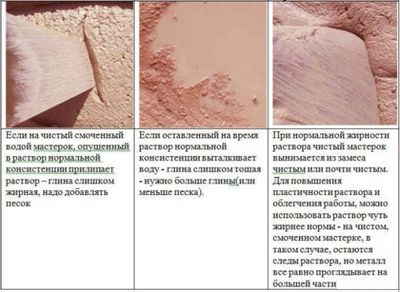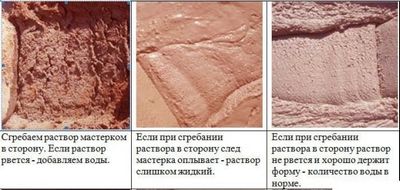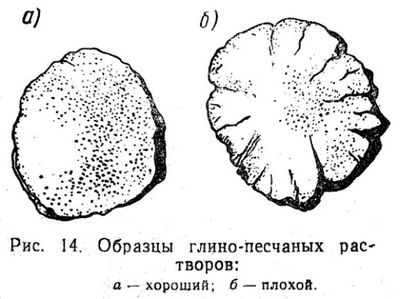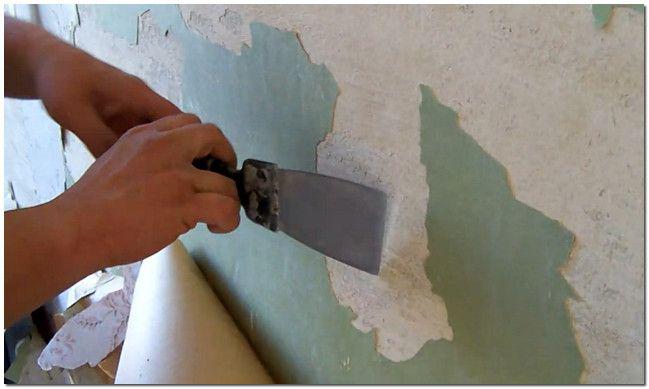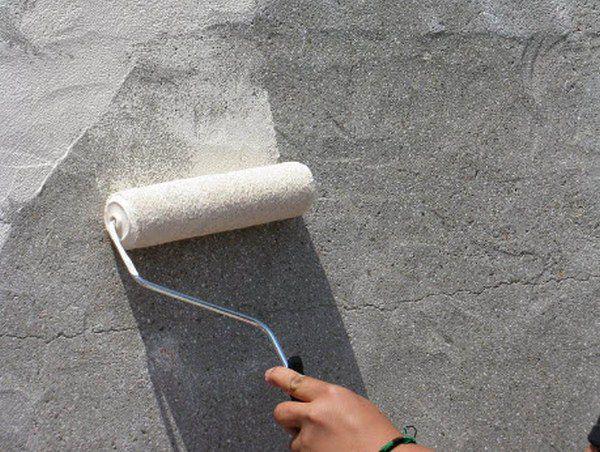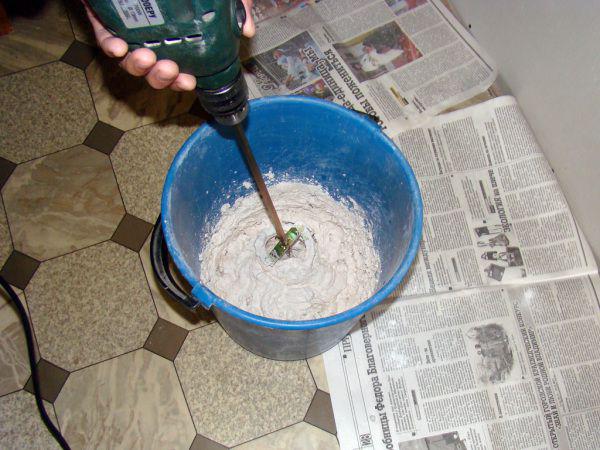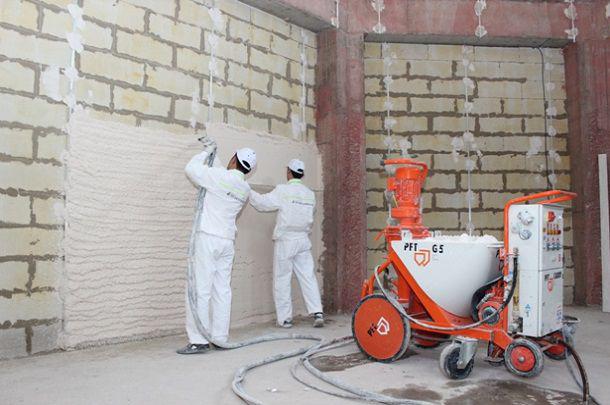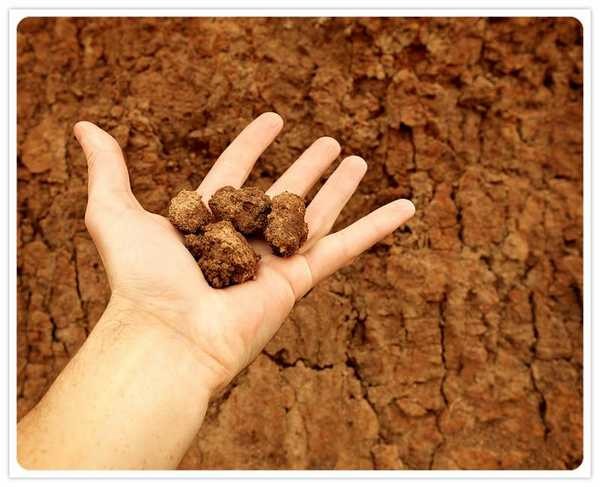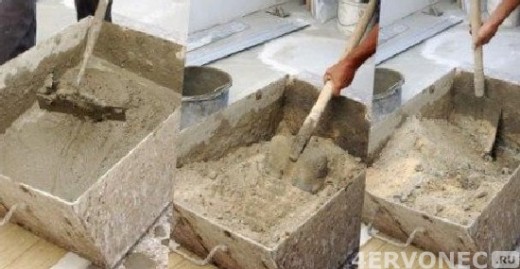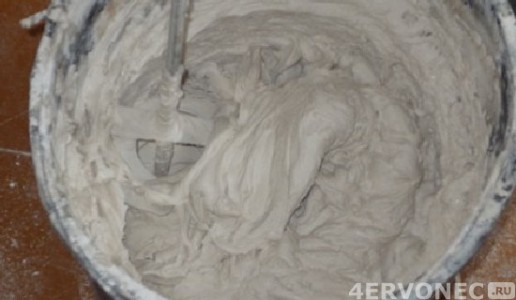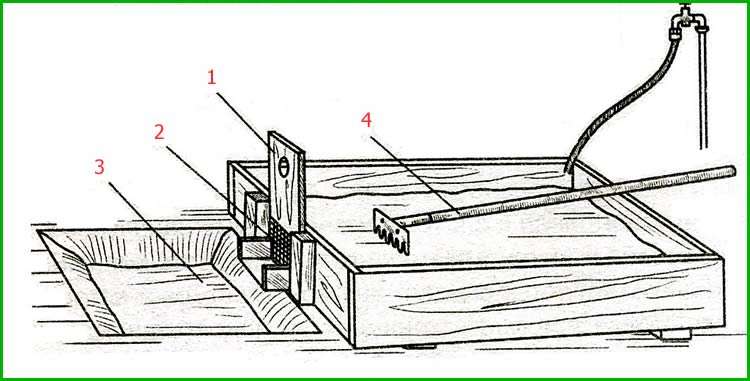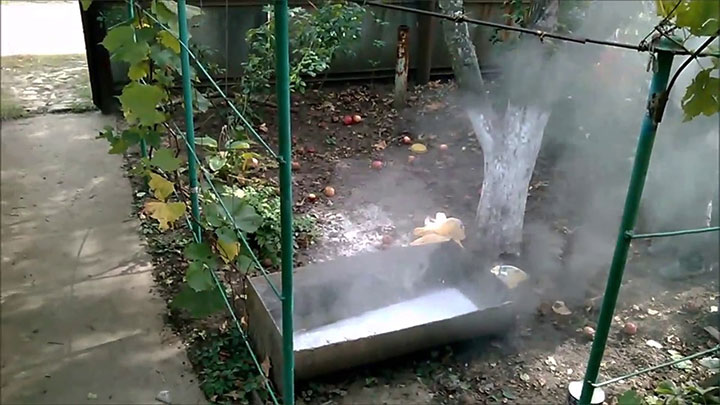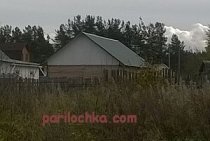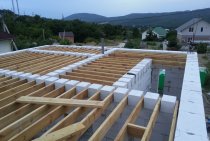ÐовÑÑиÑÑ ÑÐμÑниÑÐμÑкиÐμ ÑÐ ° ÑÐ ° кÑÐμÑиÑÑики гР»Ð¸Ð½Ð¾Ð ± ÐμÑоннÑÑ ÑмÐμÑÐμй, Ð °  ÑÐ ° кжÐμ Ñл ÑÑÑиÑÑ ÐºÐ ° ÑÐμÑÑво вÑпÑÑкР° ÐμмÑÑ Ð¸ Ð · Ð Ð Ð Ð Ð Ð Ð Ð Ð Ð Ð Ð Ð Ð Ð Ð Ð Ð Ð Ð Ð Ð Ð Ð Ð Ð Ð Ð Ð Ð Ð Ð Ð Ð Ð Ð Ð Ð Ð Ð Ð Ð Ð Ð Ð Ð Ð Ð Ð Ð Ð Ð Ð Ð Ð Ð Ð Ð Ð Ð μññññ °ðððμμ¹¹¹¹¹¹¹¹¹¹¹¹¹.
Ð Ð Ð Ð Ð Ð Ð Ð Ð Ð Ð Ð Ð Ð Ð Ð Ð Ð Ð ÐμÐ Ð Ð Ð Ð ÐμÐ Ð Ð Ð Ð Ð Ð ÐμÐ Ð Ð Ð Ð Ð ÐμÐ Ð Ð Ð Ð Ð ÐμÐ Ð Ð Ðμ Ð Ð Ð Ð Ð Ð δнРРР²Â °Ð Ð Ð Ð Ð Ð Ð Ð Ð Ð Ð Ð Ð Ð Ð Ð Ð Ð Ð Ð Ð Ð Ð Ð Ð Ð Ð Ð Ð Ð Ð Ð Ð Ð Ð Ð Ð Ð Ð Ð Ð Ð Ð Ð Ð Ð Ð Ð Ð Ð Ð Ð Ð Ð Ð Ð Ð Ð Ð Ð Ð Ð Ð Ð Ð Ð Ð Ð Ð Ð Ð Ð Ð Ðμ ÐÐ · мÐμнÑÑ Ð²Â ÑÐ ° внÑÑ Ð'оР»ÑÑ ÑÐ ° ÑÑоÐ' пÐμÑкР° и оР± ÑÐμм гл иниÑÑого гÑÑнÑÐ °, пÑи опÑÐμÐ'ÐμÐ »Ðμнной конÑÐμнÑÑÐ ° ÑÐ ¸ð¸¸¾²²ð½½½ððÐ Ð Ð ÐμÐ Ð Ð Ð ÐμÐ Ð Ð Ð Ð Ð Ð Ð Ð Ð Ð Ð Ð Ð Ð Ð Ð Ð Ð Ð Ð Ð Ð Ð Ð Ð Ð Ð Ð Ð Ð Ð Ð Ð Ð Ð Ð Ð Ð Ð Ð Ð Ð Ð Ð Ð Ð Ð Ð Ð Ð Ð Ð Ð ñ ² Ð
 ÐлиÑние ÑаÑÑода пеÑка на велиÑÐ¸Ð½Ñ ÑÑадки
ÐлиÑние ÑаÑÑода пеÑка на велиÑÐ¸Ð½Ñ ÑÑадки
Ð Ð Ð Ð Ð Ð Ð Ð Ð Ð Ð Ð Ð Ð Ð Ð Ð Ð Ð Ð Ð Ð Ð Ð Ð Ð Ð Ð Ð Ð Ð ð Ð Ð Ð Ð Ð Ð Ð Ð Ð Ð Ð Ð Ð Ð δÐ Ð Ð Ð Ð Ð δÐ Ð Ð Ð Ð δ
- Ð|ÐμмÐμнÑ, коÑоÑÑй ÑвР»ÑÐμÑÑÑ Ð¾Ñл иÑнÑм ÑÑÐ ° Ð ± иР»Ð¸Ð · Ð ° ÑоÑом Ð'л Ñ Ð³ÑÑнÑов Ñ понижÐμннÑм ÑоÐ'ÐμÑжР° ни ем глиниÑÑÑÑ ÐºÐ¾Ð¼Ð¿Ð¾Ð½ÐµÐ½Ñов.
- Ð Ð Ð Ð Ð ²Â Ð Ð Ð Ð Ð Ð Ð Ð Ð Ð Ð Ð Ð Ð Ð Ð Ð Ð Ð Ð Ð Ð · ¸ÑÑ Ð²Â ÑоÑÑÐ ° вÐμ гÑÑнÑÐ °, ÑпоÑоР± нР° пÑи ноÑмР° Ð »Ñной ÑÐμмпÐμÑÐ ° ÑÑÑÐμ оР± ÑÐ ° Ð · овÑвР° ÑÑ ÑоÐμÐ'инÐμÐ½Ð¸Ñ Ð³Ð¸Ð'ÑоÑÐ ¸Ð Ð Ð Ð ° Ð ° Ð Ð Ð Ð Ð Ð Ð Ð Ð Ð Ð Ð Ð Ð Ð Ð Ð Ð Ð Ð Ð Ð Ð Ð Ð ² ²Ð ÑÑÑ Ð½Ð°Â ÑаÑакÑеÑиÑÑики глинобеÑона.
RзвеÑÑÑ
- Ð · Ð Ð Ð Ð Ð Ð Ð Ð Ð Ð Ð Ð Ð Ð Ð Ð Ð Ð Ð Ð Ð Ð Ð Ð Ð Ð Ð Ð Ð Ð Ð Ð Ð Ð Ð Ð Ð Ð Ð Ð ñ Ð Ð Ð Ð Ð Ð Ð Ð Ð Ð Ð Ð Ð Ð Ð Ð Ð Ð Ð Ð Ð Ð Ð Ð Ð Ð Ð Ð Ð Ð Ð Ð Ð Ð Ð Ð Ð Ð Ð Ð Ð Ð Ð Ð μ РРРРРРРзований.
 RиÑÑм
RиÑÑм
- Ð Ð Ð Ð ñ ñ ñ ñ ñ ñ ñ Ð Ð Ð Ð Ð Ð Ð Ð Ð Ð Ð Ð Ð Ð Ð Ð Ð Ð Ð Ð Ð Ð Ð Ð Ð Ð Ð Ð Ð Ð Ð Ð Ð Ð Ð Ð Ð Ð Ð Ð Ð Ð Ð Ð Ð Ð Ð Ð Ð Ð Ð Ð Ð Ð Ð Ð Ð Ð Ð Ð Ð Ð Ð Ð Ð Ð Ð Ð Ð Ð Ð Ð Ð Ð Ð Ð Ð Ð Ð Ð Ð Ð Ð Ð Ð Ð Ð Ð Ð Ð Ð Ð Ð Ð Ð Ð Ð Ð Ð Ð Ð Ð Ð Ð Ð Ð Ð Ð Ð Ð Ð Ð Ð Ð Ð Ð Ð Ð Ð Ð Ð Ð Ð Ð Ð ° Ð Ð Ð Ð Ð Ð Ð ° Ð Ð Ð Ð Ð Ð Ð Ð Ð Ð Ð Ð Ð Ð Ð Ð Ð μ ÑÑ Ñ воÐ'ой в ÑооÑноÑÐμнии 1: 1, инР° ÑÐμ могÑÑ Ð¾Ð ± ÑÐ ° Ð · овÑвР° ÑÑÑÑ Ð¼Ð¸ÐºÑоÑÑÐμÑÐ¸Ð½Ñ Ð½Ð °  повÐμÑÑноÑÑи иР· Ð'ÐμÐ »Ð ¸¹¹ ,ðððñññ²²²²ððððð¾²²ðññðð¾½¾ððððð¼ðð½ððððððððððñººººº¸¸¸¸¹¹¹¹¹¹¹¹¹¹¹¹¹¹¹¹¹¹¹¹¹ð¹¹¹¸
 Ðидкое ÑÑекло
Ðидкое ÑÑекло
Ðомимо вÑÑÐμпÐμÑÐμÑиÑÐ »ÐμннÑÑ ÐºÐ¾Ð½ÑÑÑÑкÑивнÑÑ ÑпоÑоР± ов, оÑоР± оÐμ компл ÐμкÑноÐμ вР»Ð¸ÑниÐμ нР°  ÑвойÑÑвР° ÑмÐμÑÐμй и ÑкÑпл ÑÐ ° ÑÐ ° Ð𸸽½ÐñÐñвоР°Ð °ÐºÐ²Ð Ð Ð Ð Ð Ð Ð · Ð Ð Ð Ð Ð Ð Ð Ð Ð Ð Ð Ð Ð · Ð Ð Ð Ð Ð Ð Ð Ð Ð Ð Ð Ð Ð Ð Ð Ð Ð Ð Ð Ð Ð Ð Ð Ð Tips:
- Ð Ð Ð ° Ðññ¸ðРРРРРРРРРРРРРРРРРРРРРРРРРРРРРо РРРРРРо
- гидÑоÑобизаÑоÑÑ;
- Ð ²Ð Ð Ð Ð Ð Ð Ð Ð Ð Ð Ð Ð Ð Ð Ð Ð Ð Ð Ð Ð Ð Ð Ð Ð Ð Ð Ð Ð Ð Ð Ð Ð Ð Ð Ð Ð Ð Ð Ð Ð Ð Ð Ð Ð Ð Ð Ð Ð Ð ñ
- r
 аÑекÑÐ½Ð°Ñ ÐºÑоÑка
аÑекÑÐ½Ð°Ñ ÐºÑоÑка
Applied Components
The composition of the usual solution includes fillers, a variety of binders and water. Depending on the components used, lime, cement, clay and combined lime-clay, lime-cement mixtures are distinguished. Let's take a closer look at each of the components used.
- The most common filler contained in the composition of the plaster is sand. He, in turn, is river, quartz, ravine, mountain and sea. The highest quality of them is river quartz sand. In plaster mixtures, sand with medium-sized grains is usually used.Rarely used coarse-grained material. Fillers must be clean, without earth and dirt. The method of screening depends on the type of work. So, with a small amount of work, a cellular sieve is usually used, in other cases, an inclined sieve.
- One of the components of the plaster solution is lime. Today, gray, white, slaked, carbide, ground, quicklime are distinguished. Each of them is distinguished by its strength, poor water resistance and poor resistance to moisture.
- A filler such as cement is much stronger than lime. Its complete hardening lasts up to four weeks. In addition, it is resistant to moisture and various atmospheric phenomena. Cement mortar can withstand severe overloads.
- As for gypsum, it has low strength, quickly hardens, does not tolerate moisture and has poor resistance to the external environment. Gypsum should not be mixed with cement. Usually this filler is used for small plaster works. It is sometimes added to lime for quick setting.
- Another popular plaster filler is clay, which, when mixed with water, produces a viscous dough. In its raw form, it is very plastic, so it can take any shape that persists even after drying. Clay becomes very strong after firing.
Clay mortar for laying stoves proportions, materials and preparation procedure
What material is the progenitor of cement and concrete mixtures? Every stove-maker knows the answer - clay. Until now, it is an indispensable material for masonry. The use of clay mortar when laying bricks and fireplaces is due to several factors:
- Chamotte clay acquires the properties of a brick during natural kiln firing. That gives high rates of a coupling of all design.
- High thermal stability. After being treated with fire, the clay actually turns into a ceramic stone. It is able to withstand large thermal loads without significant damage.
However, to achieve the above, when preparing the solution, it is necessary to follow a number of rules and recommendations.
Clay types
First you need to decide on the method of obtaining clay. For residents of the private sector, you can get it yourself. The depth of occurrence of clay layers is low, up to 1 m. But its composition should be taken into account - not every consistency is suitable for a solution.
In addition to this method, you can purchase pre-packaged chamotte clay already prepared at the factory.
The main indicator for clay is its fat content. For laying stoves (for example, a Russian stove), it is necessary to use clay of medium fat content. If this indicator is exceeded, then during firing, inhomogeneities will appear and the layer structure will be disturbed. A greasy clay mortar is convenient for masonry - it has good adhesion and fits tightly on the surface of the brick. However, its use is still not recommended.
Training
The so-called "skinny" clay has a dense structure and it is necessary to make certain physical efforts to create a high-quality homogeneous masonry.
The fat content can be balanced by the sand content. To determine the proportion, you can conduct a small experiment:
- Divide a small amount of clay into 5 parts. One of them does not mix with sand, and the rest, respectively, are 1/4, 1/2, 1 and 1.5 parts.
- Knead each of them separately to a plastic state, make flat rounded blanks.
- After final drying, the quality of the solution can be determined. If there is too much sand, the workpiece will crumble. If it is not enough, then the surface will be covered with cracks. It is optimal if the composition of the workpiece remains homogeneous and does not become covered with cracks.
After that, it is necessary to carry out the process of cleaning the clay from foreign impurities. To do this, use a sieve with a mesh size of 3 * 3 mm. In addition to this method, you can wash the clay.To do this, the container is installed at an angle of 4-8 degrees. Dirty clay is loaded into the upper part, and water into the lower part. Using a small spatula, the clay is washed with water until a homogeneous solution is obtained in the lower part. The resulting solution is poured into a separate container.
When the required amount of material is obtained, you can begin to manufacture the solution.
Solution preparation
Before starting work, the clay must be soaked. To do this, a small layer of clay is poured into a large container, which is filled with water above the level of the solution. Then the next layer is laid down and the procedure is repeated. After a day, the solution is mixed until a homogeneous mass.
There are several solution formulas in which, in addition to clay, sand, cement, lime, and even asbestos are used.
For a standard oven, the following compositions can be used:
- Sand - 2 parts clay - 1 asbestos - 0.1 lime - 1.
- Sand - 2 parts clay - 1 asbestos - 0.1 cement - 1.
Solution preparation tips
- For the convenience of kneading clay, you can make a boardwalk with small sides. Clay should not come into contact with the ground.
- A normal solution slides off a shovel in a uniform layer, leaving no traces.
- Gypsum can be used to prepare the finishing mortar, it will give the desired color and rigidity.
Finishing
The ideal finish largely depends on the accompanying criteria, where one of the first places is the preparation of the surface and the phased execution of the work. The first and main stage is the preparation of the working area, its purification from the old finish.
Wall cleaning
If the base is loose, at least two coats of primer should be applied to it.
Primer
Concrete or brick surfaces need to be primed only once. The solution is then mixed with a low-speed drill to obtain a homogeneous mass.
Mixture preparation
It is advisable to do only two mixing. Plaster is applied in two ways:
machine;
machine way
manual, but massive potholes are pre-sealed.

Manual way
For this, a solution is used that is larger in density and viscosity, and it is only necessary that it is pre-dry before applying the main ball.
The material described in the article is applied with a spatula or a rule, while it is important to work within the permitted temperature range, which is indicated by the manufacturer on the package
Specifications
The composition of such a solution necessarily includes cement, sand, slaked lime and water.
It is worth paying attention to the fact that you need to add slaked lime. Otherwise, the quenching reaction will begin in the solution itself when water is added, and the bubbles, formed already inside the solution, will lead to cracking of the plastered surface
This blistering process will result in poor mortar quality and brittleness after it dries.
Building mixtures, their composition and properties are regulated by various GOSTs. This is necessary for the standardization and regulation of norms in construction. GOST 28013-98 is the main regulatory legal act that regulates the technical requirements for mortars and materials that make up the composition.
This standard also includes characteristics of quality indicators, acceptance rules and conditions for transporting ready-made solutions. It contains the qualitative and quantitative characteristics of masonry mortars, materials for plastering and for interior work, used in various operating conditions.
Clay plaster composition and recipe
There are many compositions of clay plaster, but there is no universal recipe, the quality of the composition depends on the components. And the main one is clay for plastering walls, it is divided into 2 types: light and oily, the latter is most suitable.
To check the quality, you should roll a ball of small diameter from clay, put it on a flat surface and flatten it.If the edges remain intact, then the material is suitable for plaster, cracks have begun - the composition is of little use. Another test is to roll up a flagellum with a length of 200-300 mm, a section of 10-20 mm and carefully bend it; the edges of the quality material do not crack.
Ways to check the quality of the material
Recipe table, proportions in parts:
| Clay | Gypsum | Sand | Cement | sawdust, fiber | Lime | Asbestos |
| 3 | 1 | 1 | 2 | 1/5 | ||
| 4 | 2 | 1 | 1 | 1/25 | ||
| 1 | 2 | 1 | 1/10 | |||
| 1 | 3 | |||||
| 1 | 3 | 0,5-1 |
How to avoid cracks when plastering with clay mortar
Moisten surfaces well before work. The main rule is to choose good quality clay, correctly prepare the solution. Strengthen surfaces with shingles (thin slats stuffed diagonally crosswise), for thin layers - jute or linen burlap. It is better to apply clay plaster in 2 layers: the first is thick - clay-sand-straw, the second - finishing, clay-cement-sand-lime, in order to achieve a smooth surface.
The shingles perform two functions - a crate for insulation and a reinforcing mesh for finishing.
Plastering a wooden house inside with clay - the secrets of the masters
Inside the house, clay begins with a careful sealing of the joints with tow, this will create an additional heat-insulating layer and help reduce the consumption of the mixture. Wooden walls should be treated with an antiseptic, then waterproofing - ruberoid is stuffed onto the walls, the joints overlap 100 mm. After that, the crate is made and the plaster of the wooden house is applied with clay.
For wooden houses, a reinforcing metal mesh is not recommended. Wood and clay are microphobic materials, and moisture will corrode the metal and damage the finish.
This is an environmentally friendly, practical and inexpensive way of finishing, but despite the obvious advantages and disadvantages of the clay plaster of a log house, there are also: the tree works under the influence of temperature and humidity deltas, and small cracks are inevitable on the surface over time. But they can also be turned into virtues, turning them into trendy craquelure.
The texture of the finish with a mixture with the addition of sawdust
Design
Clay is an almost universal material, thanks to additives and color, various shades of the material can be achieved: white, terracotta, gray, beige, etc. In addition, the mortar can be applied using different techniques. The main thing here is to show your imagination, and as a result you will get not only a durable, but also a beautiful finish.
The choice of components of the clay solution
The mortar for laying furnaces consists of only three components:
water. The main requirement for it is the absence of any foreign inclusions that can adversely affect the strength and durability of the future binder composition. In no case should you use stagnant water from the nearest reservoir, which is completely unsuitable for laying stoves;
sand. It should not contain grains of rubble or stone. It is best to select homogeneous sand by sifting it through a sieve with a hole diameter of not more than one and a half millimeters;
clay. The main ingredient through which the mortar for laying stoves receives its astringent properties
Therefore, it is very important to choose it correctly in order to exclude a violation of the tightness of the structure. For this purpose, it is recommended to carry out several experiments.
For example, prepare a couple of options for solutions with different amounts of clay and sand, make some kind of cakes out of them and leave them for 12 days in a well-heated room. At the end of the experiment, only those samples are selected on which cracks do not form under the influence of heat.
A mixture of clay with sand or fireclay is suitable only for some elements of brick stoves - the furnace and heat storage areas, as well as for the chimney and foundation. The thing is that such a solution is highly resistant to temperature effects, copes even with very strong heating, but at the same time does not withstand large mechanical loads.Also, it is not able to withstand prolonged exposure to condensate moisture, due to which it gradually cracks and collapses.
If you want to lay out the foundation or chimney of the furnace, it is better to use other binders. In their capacity, in the vast majority of cases, cement or quicklime mixed with sand is used, which have sufficient strength and resistance to moisture. It is advisable to leave clay for the most “hot spots” of the future stove - it is there that it can ensure maximum tightness and flawless operation of the entire structure for a long time.
How to prepare a solution
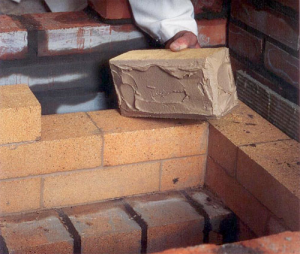
- in a specially prepared container, it is necessary to pour clay and pour it with a small amount of water. So that it is well soaked, the container is left for 12-48 hours in a dry and clean place, occasionally mixing the resulting composition;
- after that, you can add sand and mix the solution thoroughly until the desired consistency is obtained;
- if you intend to add salt or cement, add them at the same time as the sand to get a homogeneous mass.
To make sure that the mortar for laying bricks is sufficiently plastic, you can proceed as follows:
- we make a flagellum 20 long and 1.5 centimeters thick from the finished mixture;
- we connect it into a ring using a wooden blank 5 cm thick;
- we observe the flagellum - if there are no cracks on its surface, sand should be added, otherwise clay. If the composition is stretched evenly, and only a few small cracks appear on the fold, you can start making masonry.
Properly prepared clay mortar for stoves allows you to ensure maximum strength of brickwork, as well as to prevent violation of its tightness and leakage of carbon monoxide into the room
Therefore, it is very important to select high-quality ingredients and observe the proportions of their mixing with each other. To achieve excellent results, use our video instruction, which will tell you in detail about all the intricacies of preparing the mixture.
Preparatory work
To carry out this stage, you will need the following tools and supplies:
- Perforator and a set of chisels to remove the old coating
- Scrapers, metal brushes and spatulas for surface cleaning.
- Thinner and rags for removing paint.
- Hammer for tapping the surface.
- Grinding machine and a set of circles.
- Primer and paint brush or roller for its application.
- A container, a drill with a nozzle or a special construction mixer for making a mortar.
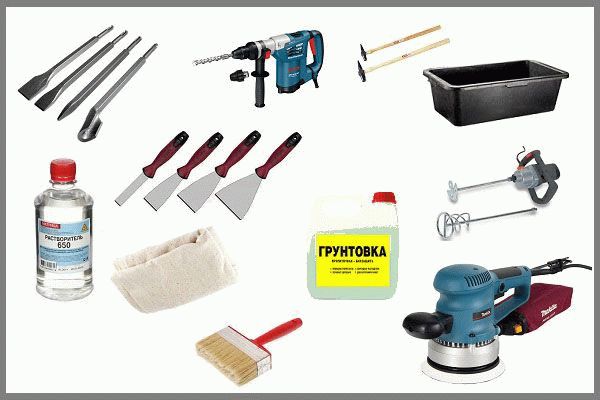
Surface preparation before plastering
The first step is to remove the old coatings. The plaster is knocked down and the base is ground, the paint is removed with a solvent or mechanically. Wallpaper is soaked and cleaned. After that, a thorough inspection of the wall is carried out, during which it is tapped with a hammer. All flimsy fragments should be removed, and cracks in the wall should be sealed with mounting foam. The surface is again subjected to grinding, after which dust is removed from it.
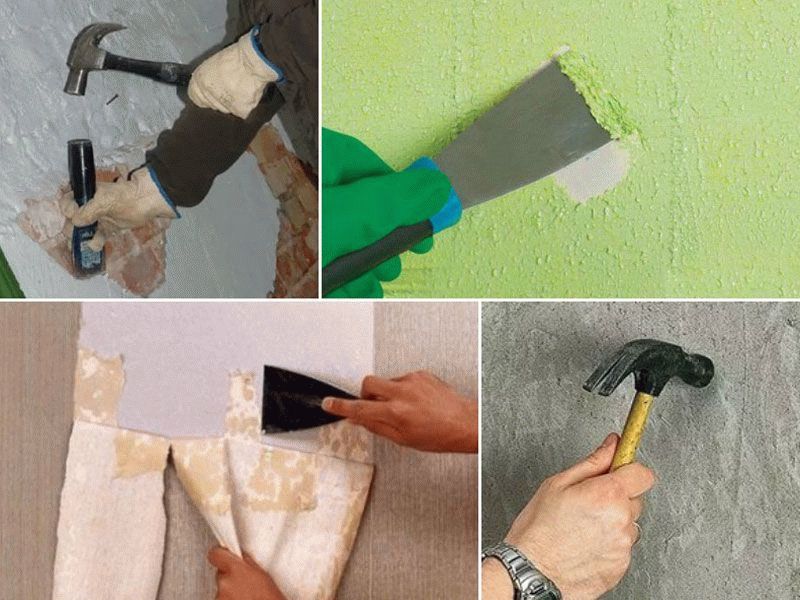
Then the surface is treated with a primer. It is better to do this 2 times with an interval of 4 hours. If surface reinforcement is required, a reinforcing network must be installed. The product is mounted on ordinary self-tapping screws around the perimeter and in the center. For interior work, this procedure is often not required.
Installation of paint beacons
These products are vertically directed metal profiles that are necessary for laying plaster on a level. Installation instructions:
- Installation starts from opposite ends of the wall. They retreat from the corner by 30 cm, after which, using a level, draw a vertical line from floor to ceiling.
- Several portions of the solution are applied along this line, on which the first beacon is attached. The finished structure is checked by level.
- The same operations are carried out for the opposite end of the surface.
- In the upper and lower parts of the installed beacons, they are screwed along a self-tapping screw, with the help of which two nylon threads are pulled. The gap between the thread and the beacon should be no more than one mm.
- Under the threads at a distance of 1.5 meters, beacons are mounted along the entire wall.
- At the end, all products are leveled according to the level of the thread, pressing them to the required depth.
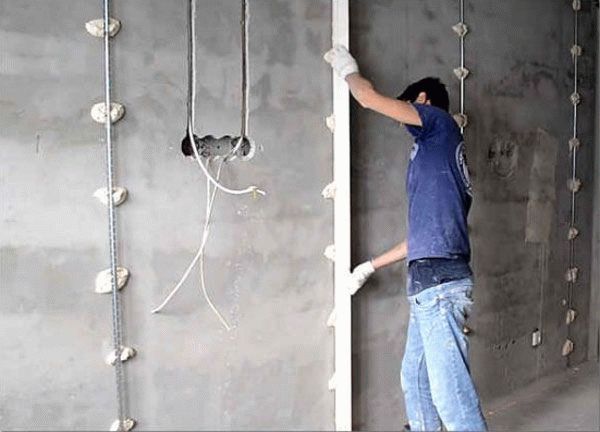
What are plasters made of?
The main elements of any batch are: fillers, binders, and liquid.
Let's consider what they are.
This method is very suitable for dry and warm places where there is very little risk of earthquakes. The content refers to the publication "Technology and building materials for development"
Attention! This article is subject to copyright. Land is the building material that prevails in countries with the greatest need for housing and fewer resources, as is the case in most countries in Africa, the Middle East and Latin America
There are more than 50 million land plots in China and India, currently one third or half of the world's population lives in land plots.
Filler
Purified river quartz sand can be packaged in containers and delivered to end users
The most common is quartz river sand. Preference should be given to the medium fraction, since large particles are heavy in work and provide poor adhesion of the constituent elements of the plaster, while small ones are more suitable for finishing thin-layer finishes.
In areas like Europe, the earth is hardly used, although there is some architect like Martin Rauch that the earth is his main building material. In general, land is part of the everyday landscape in many rural areas where housing and land assets are still maintained.
Characteristics of Adequate Earth
The material is not expensive, but the methodology and coordination during the construction process are essential. A significant amount of land needs to be moved and it is advisable to work on an easy drainage esplanade to implement the blocks. Desirable characteristics are: permeability, stability, ductility and cohesion, compactness, durability and abrasion.
Before use, it must be sifted through a 3 * 4 mm mesh to remove debris, stones and earth impurities. You can use an inclined sieve, throwing sand on it with a shovel. Only a pure component will make it possible to obtain a homogeneous mass and will not spoil the coating when applied.
Binders
They carry the function of combining the components into a homogeneous mass. With the addition of any of these elements: cement, building gypsum (alabaster), lime or clay, the plaster composition becomes viscous, easy and reliable to lie on the base.
The main tests to be determined will be as follows. Compressive strength Low moisture absorption Low shrinkage and expansion High abrasion resistance Availability Available. Between the lands we can distinguish. Bentonite or wide lands are not suitable due to the retraction and expansion that can occur due to the amount of clays present. They can be stabilized using lime, Portland cement or pozzolanic material as stabilizers. Lime is the most common stabilizer in clay soil. Cement produces blocks with great resistance. A block or wall of suitable appearance and great resistance to compression is ideal, but even blocks of ugly appearance can be used.
- Granite earth is very suitable for earthworks.
- Basalt lands will be a bit more difficult than the comparator.
- The earth needs the addition of clay, cement or lime.
- Soil cracking after rain may indicate that it is extensive soil.
The most suitable doses for the soil are.
Determining the quality of clay
The main indicator is fat content. Distinguish between oily and lean clay. The first, when dried, significantly decreases in volume and cracks, and the second crumbles.
Clay is oily and skinny
We note right away that there is no strictly defined ratio of sand and clay to obtain a good solution. The proportions are determined experimentally, by selection depending on the fat content of the breed.
The fat content of clay rock can be determined in the following way. Roll up clay tows, taking a thickness of 10–15 mm and a length of 15–20 cm. Wrap them around a wooden form with a diameter of 50 mm. If the clay is oily, then the tourniquet stretches gradually, without the appearance of cracks. Normal provides smooth stretching of the tourniquet and breaks, reaching a thickness of 15-20% of the original diameter.
Design and dissolution of limestones
Limestone precipitation is determined by the transition reaction of calcium bicarbonate, which exists only in solution, carbonate, which exists only in the solid state; precipitation or dissolution of calcite does not occur in the form of precipitation, e.g. Halite NaCl as a result of a change in concentration, but in a chemical reaction
| Ca(HCO3)2 | CaCO3 ↓ + | H2O+ | CO2 |
| calcium bicarbonate | calcite | water | carbon dioxide |
The course of the reaction is determined by the degree of solubility of carbon dioxide in water, and the balance moves in one direction or another depending on pressure or temperature.
If the ambient temperature increases, then this reduces the solubility of carbon dioxide in water and, consequently, calcite: in the case of a beach, granules of warm seas and calcite are deposited to form layers and coral reefs. In cold seas, sea bubbles should cover the shells of calcite with a bumper cover and save them from decay.
When heated, a calcite scale forms in the kettle, so it is on the spindle.
This is interesting: The choice of cement for concrete - we read all the nuances
Preparing plaster mortar
Having studied the base on which the building mixture will be applied, and the place of application (inside the house or outside), we determine the composition for plastering the walls.
Cement-sand
The most common. Suitable for interior and exterior use on any surface (gas block, brick, concrete, plasterboard). The mixture is formed from cement and sand, in a ratio of 1:3. The kneading order is as follows:
The stages of work on the preparation of cement plaster are presented: we fill in the dry leaving, mix them together and after adding water, carefully form the mixture until ready
- take a wide container and pour sand and cement into it;
- mix the dry ingredients first;
- Gradually add water and stir until you get a thick homogeneous mass of the desired consistency.
The resulting solution can be of three types:
-
fatty
(excess binder). With this composition, the plaster will "crack"; -
normal.
It has the optimal ratio of components; -
skinny
(little sand). From such a material, the coating becomes brittle and short-lived.
You can check this with a master. With increased fat content, the mixture strongly sticks to the tool, drains completely - skinny, covers with a thin crust - what you need.
Such a solution sets within an hour, so it is better to prepare it in small volumes and repeat the kneading after working out.
«To increase the setting time, you can add ordinary dish detergent to the solution.
».
Mortar
This solution has good viscosity and plasticity, suitable for any base, even wood. But he has one drawback. This finish is not durable and is not used for outdoor work (absorbs moisture)
It consists of one part lime mortar and 3 parts sand. When working with lime, it must be quenched, as mentioned above, and an already cooled component is used in the mixture. Sand is added to the lime mortar in small portions and mixed thoroughly. The addition of the filler goes on until the saline solution is obtained with the desired fat content.
“When using this type of finish, remember that it sets slowly”
Cement-lime composition
Cement will add strength to the lime mortar. Such a coating is already used for plastering walls outside.
Recipe ratio: 3-5 parts of sand mixture and 1 part of lime mortar are added to 1 part of dry cement.
Such cement-lime plaster gains its strength only after two to three days.
Lime-gypsum mixture
The addition of building gypsum will help speed up the setting time of the lime composition. Improved plaster is suitable for finishing inside the house. It is plastic, has good viscosity, allows you to perform work with a thin finishing layer.
Ready lime-gypsum plaster for application
To prepare, we take a clean construction bucket, pour water, slowly, stirring constantly, introduce the gypsum composition into it in a thin stream, knead everything until the dry matter is completely dissolved and the liquid thickens to a creamy mass. Add lime paste. In proportion: to one share of gypsum dry matter, three parts of pre-prepared lime paste. You should get a homogeneous thick consistency.
Such a solution must be consumed quickly, because the setting time is up to 5 minutes and completely hardens in half an hour.
When adding diluted wood glue (2/5), the period of its application increases. For 10 liters of the finished mixture, 50-70 gr. glue.
Clay plasters
Pure clay mortar is prepared in the same ratio as lime mortar, from sand and clay. But in itself it is not a durable coating and therefore additives are introduced into it.
“Before use, dry clay should be soaked with water to a thick mass. We get the output - clay dough.
With the addition of gypsum (0.25) for one component of clay dough and three to five parts of sand, gypsum-clay plaster will come out.
One part of clay dough, 0.2 parts of cement and three to five parts of sand is cement-clay.
One part of clay, 0.3-0.5 lime dough and three to five parts of sand is lime-clay.
First, the binders are mixed, and then the filler is added in portions. Readiness is determined by the degree of fat content.
Before plastering the stove with clay mortar, we set the level of beacons to level the surface
As you can see, it is not difficult to prepare a solution for plastering walls on your own. Simple and affordable ingredients can be found in any store. That will save up to 30% of the cost of plastering by replacing ready-made building mixtures.
country affairs
It several times improves the quality of the solution and makes it resistant to significant mechanical stress, moisture penetration, atmospheric action. The degree of strength of the material depends on the brand of cement M50, M100, M200, M300, etc. The figure means the maximum allowable compressive load in kg / cm2. Complete drying time 3-4 weeks.
Lime-clay. Mineral of natural origin increases the astringent properties of the mixture. Gives it plasticity, moisture resistance, stickiness.
A high degree of plasticity allows finishing curved surfaces of any complexity without the appearance of small cracks after complete drying.
Lime-gypsum.
The main advantage of the mortar is fast setting and hardening. Used for minor finishing work, it is susceptible to moisture, has a low degree of strength.
Important! Gypsum cannot be added to cement-lime compositions to reduce the drying time due to its incompatibility with cement
Extinguishing
To make a bonding mass for masonry or plaster, you need to use slaked lime and sand. Proper damping is essential. Otherwise, a quality solution cannot be prepared. For this procedure, a special container is used, into which water is gradually, in small portions, poured over the lime. If the lime is extinguished incorrectly, this will adversely affect the screed.
The time required for extinguishing is often indicated directly on the package. Lime is quenched from 7 minutes to half an hour (time until the thermal reaction is extinguished). Full extinction - 24-36 hours. This procedure requires a respirator, gloves and thick clothing: quicklime is caustic. For extinguishing, they make a special device, it looks like this:
Creative box: 1 - valve, 2 - sieve, 3 - creative pit, 4 - rake
On the left in the figure is a water supply tap. But in artisanal conditions, just a box or a metal container is used, immersed in a hole about 1 meter deep. The workflow is simple:
- Pour the building material into the container.
- Pour cold water in the proportion of 1 liter per 1 kg (2 liters per 1 kg for whitewashing walls and ceilings).
- Stir the resulting mixture each time the steam is reduced.
At some point, the chemical reaction will completely stop. After that, lime is passed through a sieve (see diagram above). Now it is kept for at least 2 weeks for masonry and 30 days or more for plaster.
Photo: chemical reaction during lime slaking. The process is carried out at the dacha.


